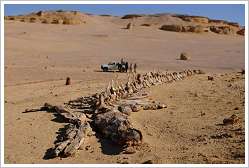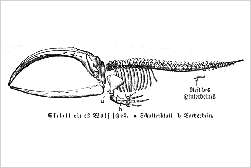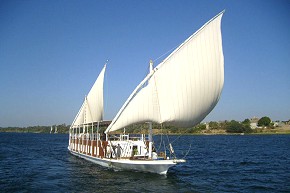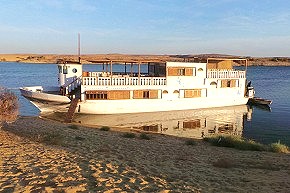We Provide
- Building Land
- Gorf *2202 (175 sqm)
- Aqalta *2216 (350 sqm)
- Gabawi *1712 (350 sqm)
- Gorf *2203 (350 sqm)
- Seoul *2204 (400 sqm)
- Gorf *2105 (525 sqm)
- Aqalta *2226 (700 sqm)
- Gorf *2206 (700 sqm)
- Aqalta *2207 (1,050 sqm)
- Aqalta *2236 (3,500 sqm)
- House Building Service
- Architecture
- Real Estates
- Hotel in Gezira
- Algana Compound, Qurna
- Villa Hana, Ramla
- Villa Hana, Ramla
- Villa Suraya, Habu
- Beit Tabuna, Habu
- Shell Apartment Papyrus, Habu
- Shell Apartm. House Mudir Gorf
- Shell Villa Farha, Gorf
- Apartment Hatshepsut 2, Gezira
- Apartment Hatshepsut 3, Gezira
- Apartment Hatshepsut 4, Gezira
- Holiday Flats
- Hatshepsut 1 (1 BR), Gezira
- Hatshepsut 2 (1 BR), Gezira
- Nile View (1 BR), Ramla
- Hatshepsut 3 (2 BR), Gezira
- Hatshepsut 4 (2 BR), Gezira
- Hatshepsut 5 (2 BR), Gezira
- Hatshepsut 7 (2 BR), Gezira
- Hatshepsut 9 (2 BR), Gezira
- Hatshepsut 6 (3 BR), Gezira
We Organise
We Report
- Sorry, no more news!
- News 2014 (26)
- News 2013 (76)
- News 2012 (92)
- News 2011 (125)
- December 2011 (18)
- November 2011 (10)
- October 2011 (10)
- September 2011 (6)
- August 2011 (5)
- July 2011 (5)
- June 2011 (19)
- May 2011 (15)
- April 2011 (13)
- March 2011 (4)
- February 2011 (11)
- January 2011 (9)
- News 2010 (31)
- News 2009 (12)
- News Overview
Useful Tools
Dahabiya Nile Cruises• from Esna to Aswan |
Privately Owned Hotel for Sale, Luxor Westbank• Centrally, quietly located in Gezira |
Lake Nasser Cruises• from Aswan or Abu Simbel |
![]()
Living in Luxor - News in and around Luxor in April 2011
![]()
 When you mouse over a picture you will get a description and copyright information. Unless otherwise specified copyright is reserved by Living in Luxor. External links are marked with
When you mouse over a picture you will get a description and copyright information. Unless otherwise specified copyright is reserved by Living in Luxor. External links are marked with ![]() .
.
![]()
Luxor Hotel under New Management, Luxor East Bank
(29/04/11)
The English luxury hotel company "The Rocco Forte Collection" entered into a contract with the Egyptian government, the present and future owner of the Luxor Hotel, to refurbish and manage it. In 1880, the hotel was built behind Luxor Temple by John Cook, son of travel pioneer Thomas Cook, and is one of the oldest hotels of Luxor. The 82-room Luxor Hotel
is currently closed and scheduled to open as a five star hotel with luxurious rooms and class-leading facilities mid 2013 following an extensive renovation.
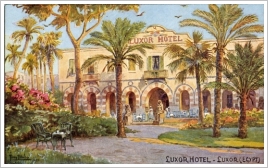

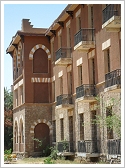
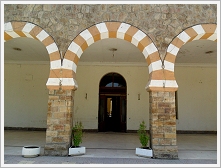
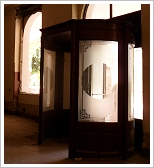
![]()
Arabic for Beginners - Hayya bina!
(28.04.11)
Entitled "Hayya bina" ("Let's go!"), an online course for Modern Standard Arabic will be available towards the end of 2011. (The Arabic language has approx. 320 million native speakers, English 340 million.) The project has been developed with the support of the EU as part the Lifelong Learning Programme. It is for complete beginners and ideal for all types of learners: pupils, students, tourists and business people and other workers. A demo version is already available, well: Hayya bina!


![]()
Dispute over DNA Analysis from Tutankhamun's Mummy
(28/04/11)
In February 2010 (see the news), when the results of the DNA studies on 16 royal mummies including Tutankhamun were published, there was a burst of excitement. Familial relationships were determined, causes of death discovered. Now, more and more sceptical voices are being raised that question the results: DNA fragments would have vanished after only around 600 years and the testing procedure (Polymerase Chain Reaction, PCR) would have been inappropriate. Beside that, on well-handled mummies such as Tutankhamun contamination could be rife. The responsible researchers argue that the mummification process protected even the DNA and that they were not able to amplify Y-chromosome markers from the female mummies, which argues against contamination from modern archaeologists, who are generally male.
Meanwhile there are next-generation techniques that could bring the different sides together. But the researchers would have to take the sequencing machines to Cairo, an expensive proposition. And there is concern that such work might yield politically sensitive information about the genetic origin of the pharaohs, and - who knows? - possibly any of their descendants are alive today? ![]() Jo Marchant: Curse of the Pharaoh's DNA, in: Nature, vol. 472, 28 April 2011, 404ff (955 KB)
Jo Marchant: Curse of the Pharaoh's DNA, in: Nature, vol. 472, 28 April 2011, 404ff (955 KB)

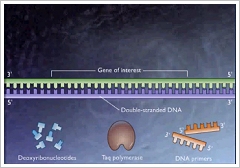
![]()
Museum of Islamic Art, Cairo
(27/04/11)
After five years of restoration the world's largest collection of islamic art is back on display. From its 100,000 artifacts 2,500 are on exhibition. The 25 halls of the Museum of Islamic art are divided into two large wings: The right wing chronologically shows islamic artifacts mainly from Cairo. The left wing presents islamic objects from other countries besides Egypt, including calligraphy, manuscripts, ceramics, mosaics, textiles, grave stones etc. dating from various periods in Islamic history. These objects are displayed both according to chronology and according to theme, provenance and material.
Address: Cairo, Bab El-Khalq Square
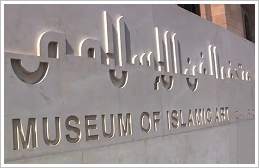
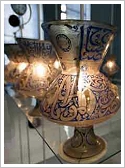
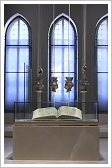
![]()
Colossal Statue of Amenhotep III Unearthed in Kom el-Hettan
(27/04/11)
After several finds of statues in 2010 (see our news of 02/03/10, 22/03/10, 17/05/10, 02/10/10 and 16/12/10) the Egyptian excavation team uncovered another statue 13 m tall that was broken in 7 parts by an earthquake 27 BC. The head of the quartzite statue, which will be re-erected in its original position after restoration, is still missing. The statue was one of a pair that once flanked the northern entrance to the Temple of Amenhotep III and was previously discovered by Egyptologists in the 1970's. These documented both statues and left them in situ, hidden in the sand.
The new mission also discovered two other statues, one depicting the god Thoth as a baboon and one of the lion-headed goddess, Sekhmet.
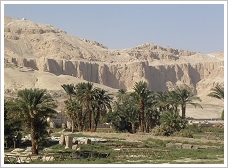
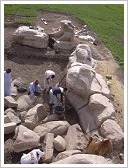
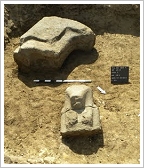
![]()
New Site Openings in Egypt
(26/04/11)
Zahi Hawass, Minister of State for Antiquities Affairs, recently announced that new sites are ready to open soon to the public. Most of them are in Cairo and Saqqara but two long-awaited concern holiday-makers in Luxor:
1. The new Crocodile Museum in Kom Ombo: It's situated directly in front of the temple there which was dedicated to the Crocodile God Sobek and the Falcon God Haroeris. 40 crocodile mummies will be in display, a couple of them are nearly 5 metres long.
2. The restored Temple of Hībis in Kharga Oasis: It is built in the 26th dynasty and was dedicated to God Amun. It is one of the most important and best-preserved temples all over Egypt but was threatened by the high ground-water level wherefore a drainage system had to be installed during the last years.
New site openings in Luxor were just hinted by
Hawass, not specified.
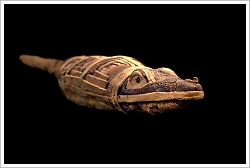
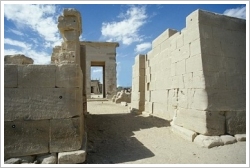
![]()
Sham El-Nessīm - Sniffing the Breeze
(23/04/11)
On 25th of April, the Monday following the Coptic Easter, both Muslims and Christians welcome the first day of spring. The holiday can be traced back as far as 2700 BC, when "Shemu" was a religious festival celebrated on the vernal equinox by the Ancient Egyptians. On Sham El-Nessīm ("Smelling the Zephyrs = west winds") the wind is believed to have a wonderfully beneficial effect. That's why at the crack of dawn Egyptians meet to spend all day out having a picnic in public gardens, on the Nile, or by the sea. The traditional food eaten on this day consists mainly of ful midammis, fasīch (dried, salted fish), lettuce, scallions and ... coloured boiled eggs :-).

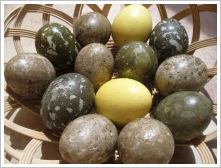
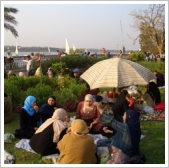
![]()
Replica Statues from Tutankhamuns Tomb
(22/04/11)
You would like to own one of the precious statues from Tutankhamun tomb as an actual size copy? That's possible now. The MSAA (= Ministry of State for Antiquities Affairs) which is the only foundation by law with permission to produce exact replicas on a 1:1 scale delivered the first 130 replica statues from its own production to hotels in Sharm el-Sheikh. Those paid 2.3 million LE what averages 2042 EUR per replica.
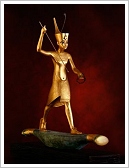
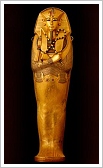
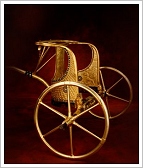
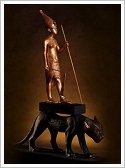
![]()
No Daylight Saving Time in Egypt
(21/04/11)
A poll created by the Egyptian government on its website showed that 80 percent of participants preferred to cancel daylight saving time, which has been in effect since 1988. It usually lasts from the end of April to the end of September but in the last years it was suspended in Ramadan what led to 4 time changes every year. Moreover, the daylight saving time brought no economic benefit but disturbed schedules of arrivals and departures at the airport as well as the rhythms of man and beast. That's why the government decided not to change the time on 29th of April.
As German opponents of the daylight saving time say: "It's not longer bright but earlier late and later cool."



![]()
Meteorite Going To Be Sold Out - Gebel Kamil
(15/04/11)
In February 2009, the Italian mineralogist Vincenzo De Michele and the astrophysicist Mario Di Martino started on an expedition to the south of Egypt. De Michele had discovered eye-catching geological structures nearby the Sudanese border by use of Google Earth. On site, they found more than 5,000 iron meteorites (ataxite rich in nickel) totalling 1.71 tons. They called the meteorite which left a relatively small crater of 45 metres in diameter by impact - "Gebel Kamil".
Their find was unique. Up to that time one had assumed that meteorites with a mass of less than 3,000 tons can not resist the thermal and mechanical stress while crossing the atmosphere and will disintegrate already well before they reach the surface of the earth. However, Gebel Kamil seemed to have been broken only while impact on the surface.
The scientists decided to keep the find confidential for the moment, but after one year when they returned with a 40-headed research team they had to learn that they didn't succeed. Just a few months later the first fragments of the Gebel Kamil meteorite were for sale in France although it's illegal
to remove meteorites from a country without an official permit. Meanwhile the black market is flourishing, the prices soar and researchers who want to examine the meteorite and its age - estimated age at the moment: 5,000 years - have not enough money to buy the popular fragments.
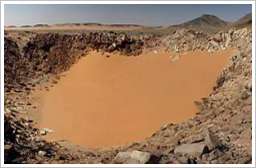
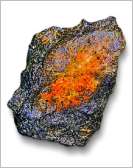
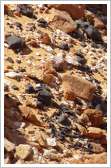
![]()
More Returned Museum Objects, Cairo
(14/04/11)
On April 12th, Zahi Hawass announced that 4 precious artifacts had been found at a Cairo metro station and returned to the Egyptian National
Museum of Antiquities. The objects returned include:
- the gilded wooden statue of Tutankhamun standing in a boat throwing a harpoon - a small part of the crown is missing as well as pieces of the legs. The boat remained in the museum after looting.
- another (intact) shabti statuette from Yuya - at the moment 9 are still missing.
- the gilded bronze trumpet of Tutankhamun and its wooden core, in excellent condition also.
- parts of Tutankhamun’s fan - one face is in good condition while the other has been broken into 11 pieces.
The artifacts will be restored if needed and put back to display.
In the meantime a special police force is set
up to protect archaeological sites and museums around the country. (Concerning recovered artifacts see also our news of 16/02/11 and 17/03/11)

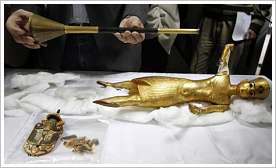
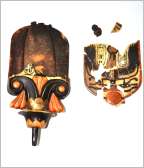
![]()
Atherosclerosis in 3600 Years Old Mummies proven
(07/04/11)
Atherosclerosis is the name of the process in which deposits build up in the inner lining of arteries which can lead to serious problems and in the long run cause death. It is the most common cause of death in the western industrial nations and normally traced back to stress, smoking, physical inactivity, and unbalanced nutrition. According to newest research based on body scans of 44 mummies from the royal family, their ministers and staff (most from the Egyptian National
Museum of Antiquities in Cairo) 20 mummies including the 17th dynasty princess Ahmose-Meret-Anon showed evidence of
atherosclerosis. That surprisingly high percentage raised questions among the reaearchers about whether hardening of the
arteries is really the disease of modern civilization that they
thought it is. Maybe there’s a missing risk factor they haven’t found yet.
Source:
Pat Wechsler: Mummy Royalty Show Signs of Clogged Arteries
3,600 Years Ago, Scans Show, in: ![]() Bloomberg, Apr 3, 2011 (73 KB)
Bloomberg, Apr 3, 2011 (73 KB)
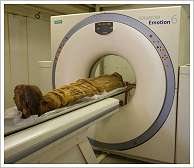
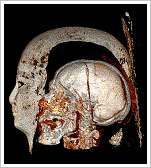
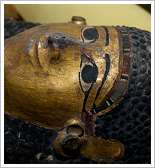
![]()
Largest Whale Skeleton Worldwide Found at Siwa Oasis
(05.04.11)
The Siwa Oasis is the most northwestern of the Egyptian oases located near the border of Libya in the Libyan Desert. The history of the oasis goes back to the 18th Dynasty (1500 BC). Since 2002, Siwa is a natural protectorate. There, the Egyptian Fossil Exploration Team in collaboration with the University of Michigan discovered the largest whale skeleton in the world, dating back 37 million years.
